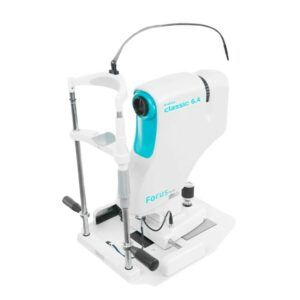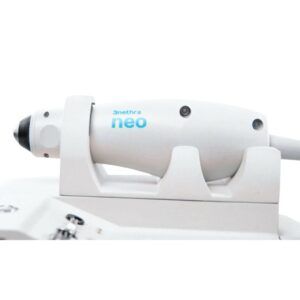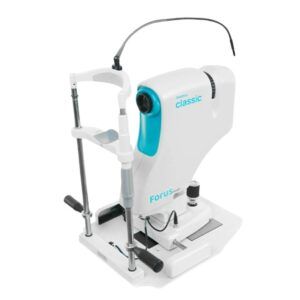In the ever-evolving field of ophthalmology, the need for precise and reliable diagnostic tools is paramount. Among these, retinal cameras stand out as indispensable instruments. These devices are essential for capturing detailed images of the retina, aiding in the diagnosis and management of various eye conditions. This comprehensive B2B buying guide delves into the world of retinal cameras, offering insights into their functionalities, types, essential features, and the myriad benefits they bring to ophthalmic practices.
Understanding Retinal Cameras
Retinal cameras, also known as fundus cameras, are specialized optical devices used to photograph the interior surface of the eye, including the retina, optic disc, macula, and posterior pole. These images are crucial for diagnosing diseases such as diabetic retinopathy, glaucoma, and macular degeneration.
Technical Know-How
- Optical Precision: Utilizes high-resolution lenses to capture clear, detailed images of the retina.
- Illumination Systems: Employs specialized lighting, often LED or halogen, to illuminate the retina without causing discomfort to the patient.
- Image Capture: High-definition sensors capture detailed images that can be stored, analyzed, and compared over time.
How It Helps in Retina Therapy
- Early Detection: Enables early detection of retinal diseases, allowing for timely intervention.
- Monitoring Progress: Helps in monitoring the progression of retinal conditions and the effectiveness of treatments.
- Patient Education: Provides visual evidence to educate patients about their eye health.
Types and Essential Features of Retinal Cameras
When selecting a retinal camera, it’s crucial to consider the different types available and their essential features to ensure you choose the right fit for your practice.
Types of Retinal Cameras
- Non-Mydriatic Cameras: These cameras do not require pupil dilation, making the procedure faster and more comfortable for patients. Ideal for routine screenings and quick assessments.
- Mydriatic Cameras: Requires dilation of the pupil to capture detailed images. Ideal for comprehensive examinations and detailed diagnostics.
- Hybrid Cameras: Can operate in both mydriatic and non-mydriatic modes. Ideal for versatile use in various clinical settings.
- Wide-Field Cameras: Captures a larger area of the retina in a single image. Ideal for detecting peripheral retinal conditions.
Essential Features of Retinal Camera
- High Resolution: Ensures sharp, detailed images for accurate diagnosis.
- User-Friendly Interface: Simplifies the operation, reducing training time and errors.
- Connectivity: Integration with electronic health records (EHR) systems for seamless data management.
- Portability: Lightweight and mobile designs for use in various clinical settings.
- Automated Functions: Features like autofocus, auto-exposure, and auto-capture enhance efficiency and image quality.
Benefits of Retinal Cameras
- Diagnostic Accuracy: Early detection of diseases are possible with this device. Easy to diagnose conditions such as diabetic retinopathy, glaucoma, and macular degeneration.
- Improved Treatment Outcomes: Enables more precise treatment planning and monitoring, leading to better patient outcomes.
- Operational Efficiency: Automated features reduce the time required for imaging, allowing for more patient throughput.
- Ease of Use: Intuitive interfaces and automated functions reduce the learning curve and minimize operator error.
- Patient Satisfaction: Comfort: Non-mydriatic cameras enhance patient comfort by eliminating the need for pupil dilation.
- Engagement: High-quality images help in educating patients about their eye health, fostering better patient engagement and adherence to treatment plans.
Spotlight on Forus Health and 3nethra series of Retinal Camera
3nethra classic 6.4 Digital Non-mydriatic Fundus Camera
The 3nethra classic 6.4 Digital Non-mydriatic Fundus Camera manufactured by Forus Health Pvt. Ltd., is an advanced medical device designed to revolutionize the management of visual health. Forus Health, a pioneering medical technology company from India, is committed to eradicating preventable blindness through innovative and affordable solutions. Established in 2010, Forus Health develops high-quality medical devices aimed at enhancing access to vision care for both urban and rural populations. Forus Health’s commitment to leveraging digital technology is evident in the 3nethra classic series.

The 3nethra classic 6.4 is a state-of-the-art digital non-mydriatic fundus camera that facilitates the capture of undistorted and uniformly illuminated photographs of the retina and the surface area of the cornea. Its compact design enhances mobility, making it ideal for deployment in various clinical settings. Clinicians in ophthalmology, optometry, and primary care can utilize this camera to effectively evaluate, diagnose, and document visual health conditions.
3nethra neo Digital Wide-field Imaging System
The 3nethra neo by Forus Health Pvt. Ltd is a compact, portable, and easy-to-use mydriatic wide-field digital imaging system designed for pediatric ocular disease photo documentation. It features a lightweight, ergonomic handpiece for single-handed operation and captures high-resolution, 120-degree FOV images of the pediatric retina. Ideal for documenting and managing conditions like retinopathy of prematurity in premature infants, this system is perfect for hospitals, operating rooms, and NICUs.
3nethra classic HD Digital Fundus Camera
The 3nethra classic HD by Forus Health is a state-of-the-art digital fundus camera designed to capture high-resolution, undistorted images of the retina and cornea. Its advanced imaging and telemedicine capabilities enhance diagnostic accuracy and efficiency. With multiple imaging modes like high dynamic range, red-free, and mydriatic, this device aids clinicians in evaluating and documenting ocular diseases. Forus Health, a leader in medical technology from India, aims to eradicate preventable blindness by making vision care accessible and affordable through innovative solutions.
Choosing the right retinal camera is a critical decision for any ophthalmic practice. With advancements in technology, these devices offer unparalleled diagnostic capabilities, enhancing both patient care and operational efficiency. By understanding the different types of retinal cameras, their essential features, and the benefits they bring, you can make an informed decision that aligns with your clinical needs and goals. Equip your practice with a top-tier retinal camera and take a significant step towards delivering exceptional eye care.
Disclaimer: This buying guide provides general information and should not replace professional advice and guidance.


